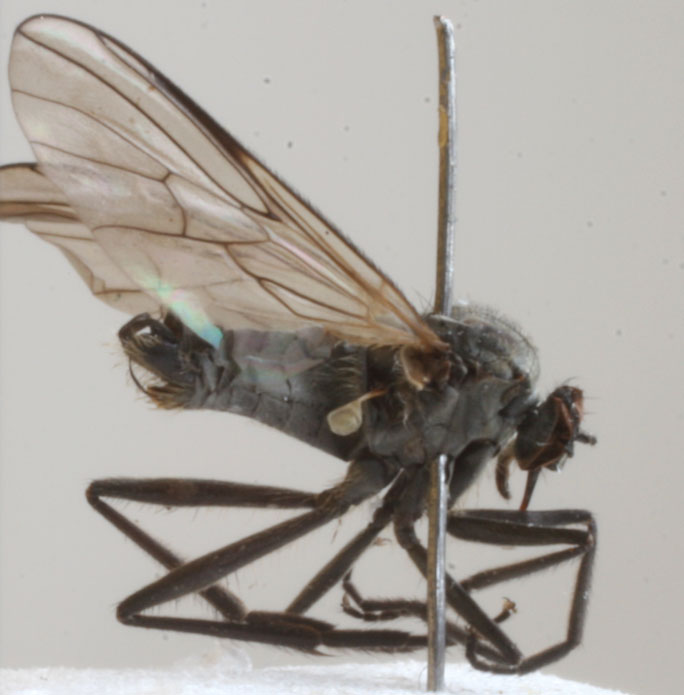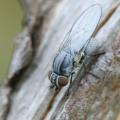Diptera.info :: Identification queries :: Diptera (adults)
Who is here? 1 guest(s)
|
H. albitarsis?
|
|
| Nikita Vikhrev |
Posted on 09-04-2006 15:20
|
|
Member Location: Moscow, Russia Posts: 9399 Joined: 24.05.05 |
Last year in may over small dirty river inside Moscow I collected this fly. My old friend helped me "to pin it" and told me that it is some Diptera. Today cleaning my house I found that fly. In my key the fact that Sc do not reach C is enoght to ID it as H. albitarsis (first teza). Also: 3 black lines on thorax, enlarged f3, normal t3. Am I right? Nikita Vikhrev attached the following image:  [61.03Kb] Nikita Vikhrev - Zool Museum of Moscow University |
|
|
|
| Paul Beuk |
Posted on 10-04-2006 06:10
|
|
Super Administrator Location: Netherlands Posts: 19403 Joined: 11.05.04 |
If you are thinking about Hilara, I am afraid you are way off. R4+5 is not forked so you should have ended up in Rhamphomyia. It looks like R. (Megacyttarus) crassirostris (male): eyes not contiguous in male and 'elaborate' genitalia.
Edited by Paul Beuk on 20-05-2006 11:17 Paul - - - - Paul Beuk on https://diptera.info |
| Nikita Vikhrev |
Posted on 10-04-2006 09:46
|
|
Member Location: Moscow, Russia Posts: 9399 Joined: 24.05.05 |
Thank you Paul. I have to think what to do with this permanent error: collected fly under water I do not regard obviosly non-Hilara venation. Nikita 
Nikita Vikhrev - Zool Museum of Moscow University |
|
|
|
| Paul Beuk |
Posted on 10-04-2006 10:06
|
|
Super Administrator Location: Netherlands Posts: 19403 Joined: 11.05.04 |
I am not quite sure qhat you mean by 'collected fly under water' but R. crassirostris can swarm very close to the water surface (or at least males hunt very close to it) and they are thus prone to get into the water when you sweep close to the surface. And there probably other other reasons that a specimen may get submerged...
Paul - - - - Paul Beuk on https://diptera.info |
| Nikita Vikhrev |
Posted on 10-04-2006 12:23
|
|
Member Location: Moscow, Russia Posts: 9399 Joined: 24.05.05 |
The fly looked to patrol water surface. It seemed that fly look rather for prey than female. Exactly as Hilaras do. Unfortunely, even this observation isn't enought reason not to see that R4+5 not forked. Nikita Nikita Vikhrev - Zool Museum of Moscow University |
|
|
|
| Paul Beuk |
Posted on 10-04-2006 12:30
|
|
Super Administrator Location: Netherlands Posts: 19403 Joined: 11.05.04 |
R. crassirostris behaves like Hilara in this respect, that is true. I am not quite certain whether females also come to the water surface and that mate selection takes place there, too.
Paul - - - - Paul Beuk on https://diptera.info |
| Jump to Forum: |
















